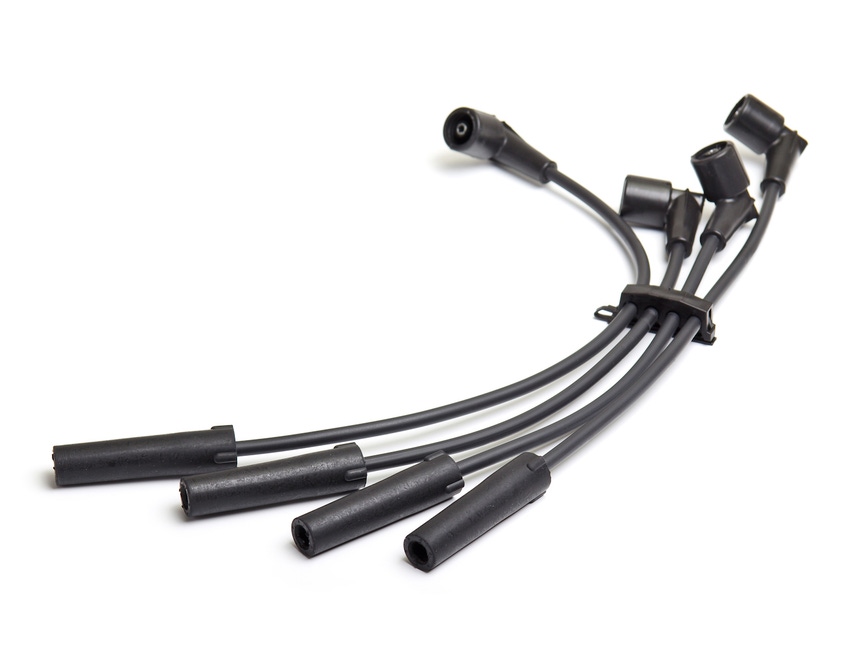Innovative additive technology brings value gains to plastic compounds
October 22, 2016

Specialty chemicals company Vertellus, a leading global supplier of high-end additives to the plastics and polymer industries, is showcasing a host of additive solutions here in Dusseldorf at K 2016 (hall 5, stand C08-2).
 Among the highlights are the company’s ZeMac products and Citroflex bio-based plasticizers. The former are used to boost performance in different ways; the latter are a range of additives that provide proven alternatives to potentially harmful phthalate plasticizers – to help compounders and manufacturers stay ahead of key environmental and health trends.
Among the highlights are the company’s ZeMac products and Citroflex bio-based plasticizers. The former are used to boost performance in different ways; the latter are a range of additives that provide proven alternatives to potentially harmful phthalate plasticizers – to help compounders and manufacturers stay ahead of key environmental and health trends.
Vertellus’ Citroflex bio-based, biodegradable plasticizers are derived from citric acid and manufactured without the use of phthalates, which have in some cases been shown to cause developmental and/or reproductive effects in laboratory animals. Suitable for food contact and medical applications, these plasticizers are also a safe choice for applications such as childrens’ toys and coatings. The development of these alternative, non-toxic plasticizers, said Ashok Adur, Ph.D., global commercial development director, Plastics at Vertellus, is part of the reason why PVC is continuing to show good growth. “The plastics industry faces growing pressure to demonstrate that it is part of the solution – not the problem – for better safety and sustainability,” he said.
The second product line, Vertellus’ family of ZeMac products, is at least as versatile as it is useful, and in fact, the company just launched three new Zemac masterbatches here at the show. According to Ashok Adur, the product has uses varying from its ability to increase the viscosity of polyamide to raising a recycled resin’s performance properties. “For example, we just introduced ZeMac Extend P62 masterbatch, which is also the only product on the market today that can act as a compatibilizer between polyamide and recycled PET,” he said. “It works by creating interfacial adhesion between the two materials. We can therefore incorporate up to 20-25% PET in applications where until now, neat PA has been used, without noticeably affecting properties. It’s a good value proposition.” Possible applications? “We think power tools, sporting goods furniture parts – that kind of thing,” he said.
Another growing application for these copolymers are as size regulators in microencapsulation of phase-change materials, to create temperature-controlled mattresses and clothing, and in the construction of energy-efficient buildings by improving insulation performance. “They produce very regular, spherical particles,” said Adur, “and in mattresses, increase the toughness of the shell material, which makes it possible to down gauge the wall thickness.”
ZeMac powders and masterbatches, including ZeMac Extend L65 and L68, the two other masterbatches  launched at the show, promote greater use of post-consumer and post-industrial PET and other resins by improving their performance and processability. They are chain extenders and branching agents that convert low relative viscosity (RV) PA to branched high RV PA with higher mechanical and thermal performance than linear high RV PA, making it suitable for injection molding. In blow molding and profile and film extrusion applications, the new ZeMac Extend L68 masterbatch ensures even distribution of the additive to produce smooth, uniform surfaces with no gels.
launched at the show, promote greater use of post-consumer and post-industrial PET and other resins by improving their performance and processability. They are chain extenders and branching agents that convert low relative viscosity (RV) PA to branched high RV PA with higher mechanical and thermal performance than linear high RV PA, making it suitable for injection molding. In blow molding and profile and film extrusion applications, the new ZeMac Extend L68 masterbatch ensures even distribution of the additive to produce smooth, uniform surfaces with no gels.
These masterbatches can also be used for upgrading recycled or prime nylon compounds. By incorporating up to 40 percent recycled resin with virgin polymer, compounders can cut costs while helping to reduce raw material use and avoid landfilling. At cost-effective low loadings, ZeMac copolymers raise a recycled resin’s performance properties, including flexural modulus and strength, tensile strength and elongation, impact resistance and heat deflection temperature (HDT). They can be used with PA, PET, TPU, polybutylene terephthalate (PBT), polycarbonate (PC), polyoxymethylene (POM) and biopolymers.
Vertellus’ ZeMac copolymers can also serve to optimize glass fiber sizing chemistries in resins and composites, enabling the use of glass-reinforced nylon in applications where high temperatures and hydrolysis exposure previously demanded either metal, which are heavy or over-engineered plastics, which can raise costs.
“It increases the hydrolysis resistance – reactive groups on the surface react with the nylon matrix,” said Adur. “For example, as a result the radiator fluid will no longer corrode the car radiator.”
By using this technology to improve the mechanical properties of, say, glass fiber-reinforced nylon 6/6, automotive OEMs and tiers can cut weight and costs in under-the-hood components and other parts. This, in turn, can increase fuel efficiency and lower emissions for greater sustainability. ZeMac copolymers can play a major role in the automotive industry’s compliance with the U.S. Corporate Average Fuel Economy (CAFE) and Euro 6 emissions standards.
About the Author(s)
You May Also Like


